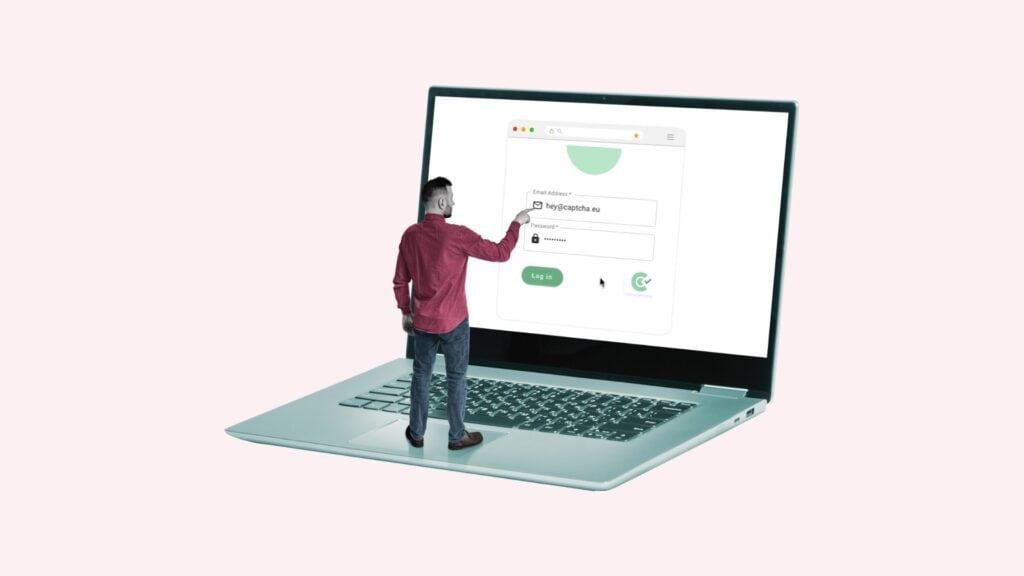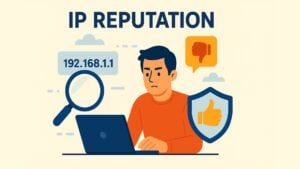
In today’s digital world, where computer programs and algorithms are becoming more and more sophisticated, there is a problem that affects both website owners and users: spam and abuse. To protect themselves from unwanted spam messages, fake accounts and other types of online abuse, many websites have introduced captchas. But what exactly is a captcha, and how does it work?
What is a captcha?
Captcha stands for “Completely Automated Public Turing test to tell Computers and Humans Apart”. The term was coined by Luis von Ahn, Manuel Blum and John Langford in 2000 at Carnegie Mellon University. It is a technology that aims to distinguish computer programs from real human users.
A captcha usually consists of an image or audio recording that contains a series of letters, numbers, or symbols that the user must then enter to prove that they are a human user. Classic captchas are usually designed to be easily read by humans but difficult to decipher by computer programs.
Why do we need captchas?
The main goal of captchas is to prevent automated attacks. Websites that are visited by many people are a popular target for automated programs that impersonate human users to spread spam or perform other types of abuse. By implementing captchas, website operators can ensure that users who log in, post comments, or perform other actions are actually human users and not controlled by programs.
Another reason for using captchas is that they can help increase the security of user accounts. For example, if a user tries to log in to an account that doesn’t belong to them, a captcha can be used to ensure that the user is actually a person and not an automated program trying to hack the account.
Using captchas can also help improve website performance by reducing traffic from automated programs. Websites that are visited by many automated programs can slow down and possibly even crash due to the high number of requests. By implementing captchas, a website owner can ensure that only real human users access the website, thus improving performance.
Types of captchas
The main goal of captchas is to prevent automated attacks. Websites that are visited by many people are a popular target for automated programs that impersonate human users to spread spam or perform other types of abuse. By implementing captchas, website operators can ensure that users who log in, post comments, or perform other actions are actually human users and not controlled by programs.
Text captchas
Text captchas require the user to decipher a distorted or disturbed text and type it into an input field. The text can also be complicated by background images or colors to make it more difficult for computer programs to decipher.
Image captchas
Image captchas require the user to identify an image or select a certain number of images that contain certain features or objects. For example, the user may be asked to select all images containing cars or to select all images containing traffic lights.
Audio captchas
With audio captchas, the user hears a distorted or disturbed voice recording and then must type the text that is spoken in the recording. This is an accessible option for users with visual impairments or for users who have difficulty reading text.
Computational captchas
Calculation task captchas require the user to solve a mathematical task, such as adding two numbers or solving an equation.
Puzzle captchas
Puzzle captchas require the user to perform a specific action, such as joining parts of an image or moving objects to the correct location.
Interactive captchas
Interactive captchas require the user to perform a specific action, such as moving an object to a specific location or filling out a form.
There are also hybrid captcha forms that combine elements from different types of captchas to increase security and improve usability.
Challenges when using captchas
Although captchas are an effective way to prevent spam and abuse on websites, there are also some challenges that can arise when using captchas:
Accessibility
Captchas can be difficult to access for people with disabilities such as visual impairments or hearing impairments. Text captchas can be difficult to read due to visual limitations, while audio captchas are inaccessible to deaf users.
User Experience
Some users find captchas frustrating and time-consuming, especially if they are difficult to solve or require multiple attempts to be correct. This can cause users to abandon their activities on the website or switch to another website.
Security
Captchas are not 100% secure and can be defeated by sophisticated computer programs, especially if they are not regularly updated or modified. Also, some captchas can be bypassed by human captcha solvers.
Multilingualism
Captchas can be difficult to understand for users who do not speak or read a language used on the website. This can lead to difficulty solving captchas and accessing certain content.
Abuse
Captchas can also be abused by people who want to perform illegal activities, such as spamming or phishing. These people can use human captcha solver services to bypass captchas and continue their activities.
Overall, the use of captchas would require careful consideration between security and usability. With our captcha solution, you can guarantee security and user experience in equal measure. You can learn how it works here: captcha.eu




